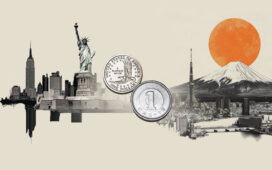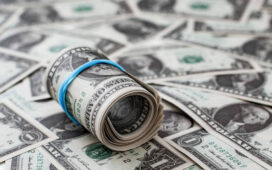EUR/USD struggles for the second successive session, trading around 1.1660 during the Asian hours on Monday. The pair depreciates as the Euro (EUR) struggles after Bloomberg reported on Saturday that S&P Global Ratings downgraded France’s credit rating to A+ from AA-, citing “elevated” budget uncertainty despite the government’s submission of its 2025 draft budget.
France has lost its AA- rating at two of the three major credit assessors in little more than a month, including downgrades from Fitch and DBRS. The downgrade came after a week of political turmoil in which French Prime Minister Sebastien Lecornu narrowly survived two no-confidence votes in parliament. To retain power, his new government was forced to abandon President Emmanuel Macron’s widely unpopular 2023 pension reform.
The downside of the EUR/USD pair could be restrained as the US Dollar (USD) remains under pressure due to the ongoing US federal government shutdown. The government shutdown has stretched into its 19th day with no resolution in sight, as senators failed for the tenth time to break the impasse during Thursday’s votes. It now stands as the third-longest funding lapse in modern US history.
However, the US Dollar (USD) may limit its losses amid easing US-China trade tensions. US President Donald Trump said over the weekend that he wants China to buy soybeans at least in the amount they were buying before. Trump added that he believes China will make a deal on soybeans. “We can lower what China has to pay in tariffs, but China has to do things for us too,” he added.
US Treasury Secretary Scott Bessent and Chinese Vice Premier He Lifeng are scheduled to meet in the coming days to ease tensions ahead of a potential meeting between Presidents Trump and Xi later this month.
Euro FAQs
The Euro is the currency for the 19 European Union countries that belong to the Eurozone. It is the second most heavily traded currency in the world behind the US Dollar. In 2022, it accounted for 31% of all foreign exchange transactions, with an average daily turnover of over $2.2 trillion a day.
EUR/USD is the most heavily traded currency pair in the world, accounting for an estimated 30% off all transactions, followed by EUR/JPY (4%), EUR/GBP (3%) and EUR/AUD (2%).
The European Central Bank (ECB) in Frankfurt, Germany, is the reserve bank for the Eurozone. The ECB sets interest rates and manages monetary policy.
The ECB’s primary mandate is to maintain price stability, which means either controlling inflation or stimulating growth. Its primary tool is the raising or lowering of interest rates. Relatively high interest rates – or the expectation of higher rates – will usually benefit the Euro and vice versa.
The ECB Governing Council makes monetary policy decisions at meetings held eight times a year. Decisions are made by heads of the Eurozone national banks and six permanent members, including the President of the ECB, Christine Lagarde.
Eurozone inflation data, measured by the Harmonized Index of Consumer Prices (HICP), is an important econometric for the Euro. If inflation rises more than expected, especially if above the ECB’s 2% target, it obliges the ECB to raise interest rates to bring it back under control.
Relatively high interest rates compared to its counterparts will usually benefit the Euro, as it makes the region more attractive as a place for global investors to park their money.
Data releases gauge the health of the economy and can impact on the Euro. Indicators such as GDP, Manufacturing and Services PMIs, employment, and consumer sentiment surveys can all influence the direction of the single currency.
A strong economy is good for the Euro. Not only does it attract more foreign investment but it may encourage the ECB to put up interest rates, which will directly strengthen the Euro. Otherwise, if economic data is weak, the Euro is likely to fall.
Economic data for the four largest economies in the euro area (Germany, France, Italy and Spain) are especially significant, as they account for 75% of the Eurozone’s economy.
Another significant data release for the Euro is the Trade Balance. This indicator measures the difference between what a country earns from its exports and what it spends on imports over a given period.
If a country produces highly sought after exports then its currency will gain in value purely from the extra demand created from foreign buyers seeking to purchase these goods. Therefore, a positive net Trade Balance strengthens a currency and vice versa for a negative balance.




